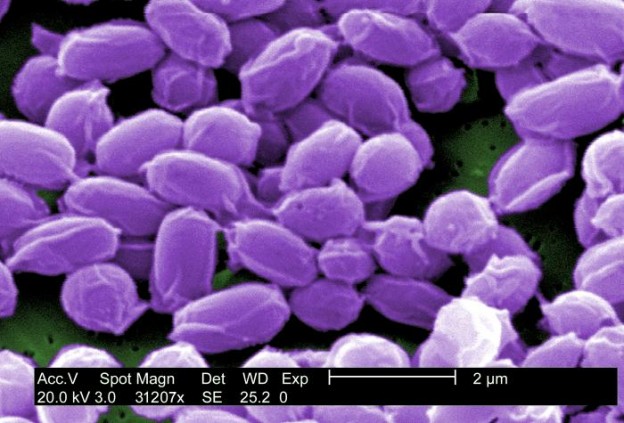India: Anthrax cases rise in Visakha Agency
The number of cutaneous anthrax cases in Visakha Agency in northern Andhra Pradesh, India has risen since first reported a week ago with the case tally is now in the dozens.

Anthrax image/Janice Carr-CDC
Nineteen additional anthrax cases were reported from the Visakha Agency, according to local media.
It is reported that the new cases were hospitalized earlier this week after consuming suspected anthrax-tainted ox.
Apparently, anthrax vaccination of animals in the area has lapsed leading to the surge in cases in Visakha Agency. “Vaccination of animals in the area from where the anthrax cases are reported is necessary to prevent the recurrence of cutaneous anthrax. Vaccination should be done at least once in two years covering all animals,” former HoD of Dermatology of King George Hospital and Andhra Medical College, G. Raghurama Rao, said.
LISTEN: Anthrax in animals: An interview with Dr. Buddy Faries
Anthrax is a very serious disease of livestock because it can potentially cause the rapid loss of a large number of animals in a very short time. Affected animals are often found dead with no illness detected.
It infects humans primarily through occupational or incidental exposure with infected animals of their skins.
Anthrax is caused by the bacterium, Bacillus anthracis. This spore forming bacteria can survive in the environment for years because of its ability to resist heat, cold, drying, etc. this is usually the infectious stage of anthrax.
When conditions become favorable, the spores germinate into colonies of bacteria. An example would be a grazing cow ingests spores that in the cow, germinate, grow spread and eventually kill the animal.
The bacteria will form spores in the carcass and then return to the soil to infect other animals. The vegetative form is rarely implicated in transmission.
There are no reports of person-to-person transmission of anthrax. People get anthrax by handling contaminated animal or animal products, consuming undercooked meat of infected animals and more recently, intentional release of spores.
There are three types of human anthrax with differing degrees of seriousness: cutaneous, gastrointestinal and inhalation.














